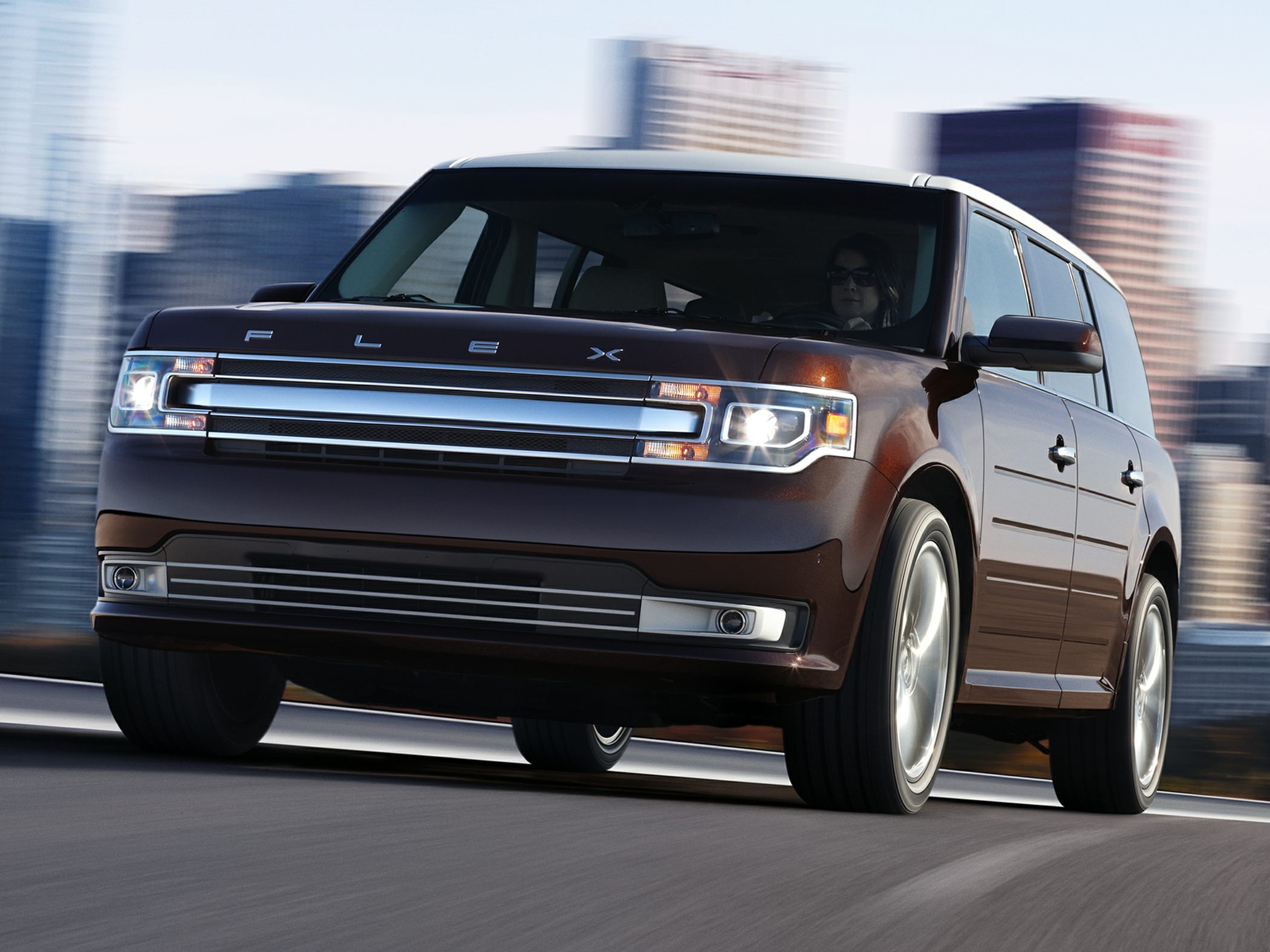When it comes to SUVs with the most headroom, there are several factors that can make a significant difference for taller people seeking comfort and space. This guide will delve into the realm of roomy SUVs and supply you with important data on which vehicles provide optimal headroom for both front-seat and rear-seat passengers.
Beyond just discussing SUVs with the most headroom, we’ll also explore other important interior dimensions such as legroom, shoulder room, hip room, cargo space, and storage capacity. Additionally, exterior dimensions like length, width, height of SUVs will be discussed along with ground clearance and approach angle.
Furthermore, we’ll examine various safety features found in modern-day SUVs including airbags systems and electronic stability control (ESC), blind spot monitoring system (BSM), adaptive cruise control (ACC) among others. Performance specifications such as engine power outputs and torque ratings will be analyzed too.
To ensure our readers stay informed about cutting-edge technology features in today’s market-leading vehicles; infotainment systems connectivity options driver assistance technologies are all covered within this blog post Lastly pricing different models financing available maintenance costs give complete picture what expect when investing an SUV offering ample amount headspace
Table of Contents:
- SUVs with the Most Headroom
- Measurement of Headroom
- Factors to Consider
- Top SUVs with the Most Headroom
- Interior Dimensions of SUVs
- Exterior Dimensions of SUVs
- Safety Features in SUVs
- Performance Specifications of SUVs
- Technology Features in SUVs
- Pricing of SUVs
- Frequently Asked Questions Suvs Witht the Most Headroom
- Conclusion
SUVs with the Most Headroom
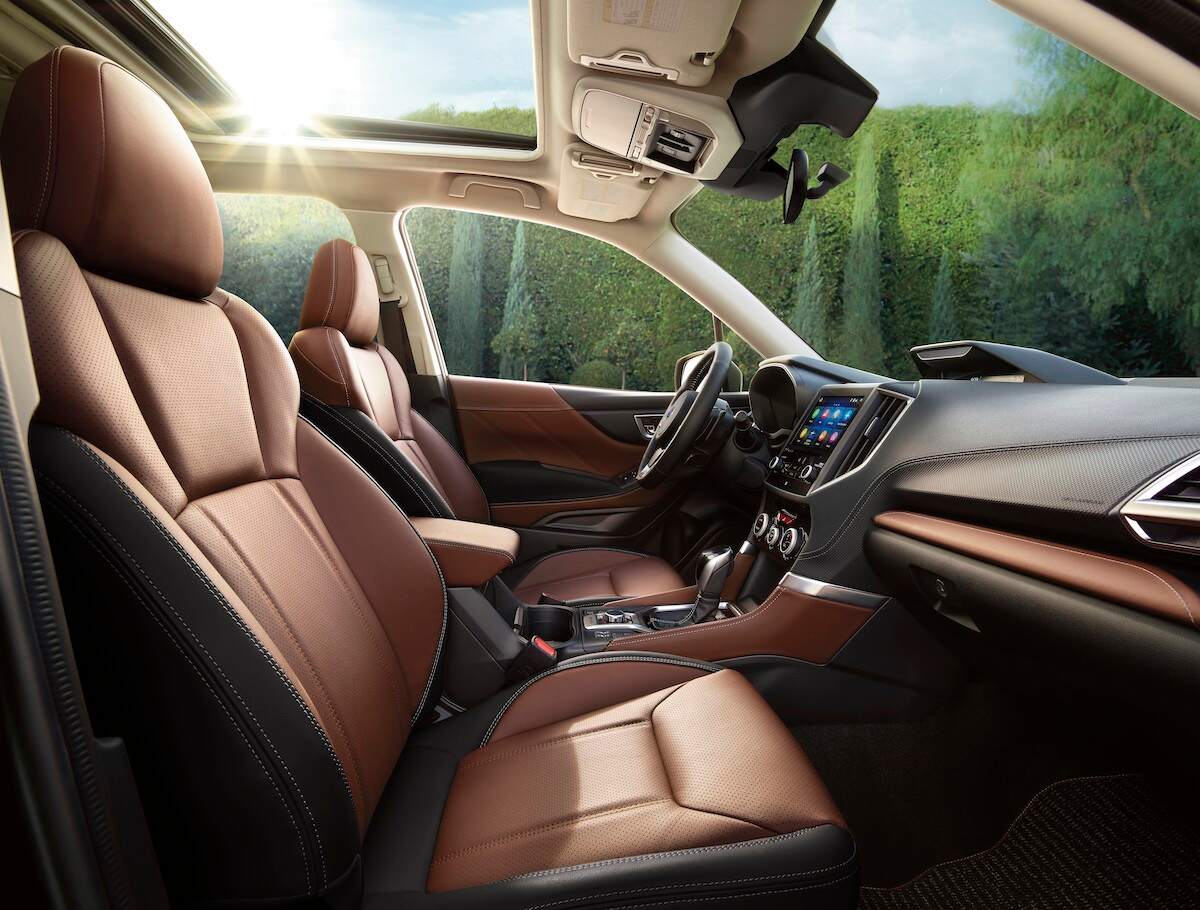
When considering an SUV, headroom is a critical factor for many drivers as it impacts comfort and ease of access to the vehicle. This measurement can make a significant difference in overall comfort and ease of entry and exit from the vehicle. This article will explain the measurement of headroom, what to look for when searching for a roomy SUV, and provide an overview of some of the top models with plenty of overhead space.
Measurement of Headroom
Headroom refers to the vertical distance between the interior roof lining or sunroof (if equipped) and the seating surface. It is typically measured in inches or millimeters. Manufacturers often provide separate measurements for front-row passengers and rear-seat occupants as well.
Factors to Consider
In addition to measuring available headspace directly, there are several other factors you may want to take into account when searching for an SUV with plenty of room overhead:
- Sunroofs: Vehicles equipped with sunroofs often have slightly less headroom than those without due to additional hardware taking up space within the roof structure. Keep this in mind if you prefer having a sunroof but require extra clearance above your seat.
- Raised Seats: Some vehicles feature adjustable seats that can be raised or lowered according to driver preference. While raising your seat may improve visibility on the road ahead, it could also reduce available headspace inside your vehicle.
- Cabin Design: The overall design of a vehicle’s cabin can impact perceived spaciousness even if actual measurements remain similar across different models. Look out for wide windowsills or thick pillars which might create visual obstructions while seated inside various SUVS during test drives.
1. Top SUVs with the Most Headroom
The following is a list of some popular SUV models known for their generous headroom measurements:
- Subaru Forester: With up to 41.2 inches of front headroom and 39.6 inches in the rear, this compact crossover provides ample space for taller passengers.
- Ford Expedition: This full-size SUV offers an impressive amount of headspace, measuring at approximately 42 inches in both rows (depending on seating configuration).
- The Honda CR-V, with its front-row headroom of up to 40.1 inches and backseat area measuring at around 39.2 inches, provides an adequate amount of clearance above one’s head for a comfortable ride.
In conclusion, when searching for an SUV with plenty of headroom, be sure to consider factors such as sunroof presence or absence, seat height adjustments and overall cabin design along with direct measurements provided by manufacturers. By doing so you can find the perfect vehicle that meets your needs while providing maximum comfort during every drive.
SUVs with the most headroom provide a comfortable driving experience for drivers and passengers alike. With that in mind, let’s delve into the details of SUVs to gain further insight into their superiority.
Key Takeaway: Looking for an SUV with ample headroom? Consider factors such as sunroof presence, seat height adjustments and overall cabin design along with direct measurements provided by manufacturers. The Subaru Forester, Ford Expedition and Honda CR-V are popular models known for their generous headroom measurements.
2. Interior Dimensions of SUVs
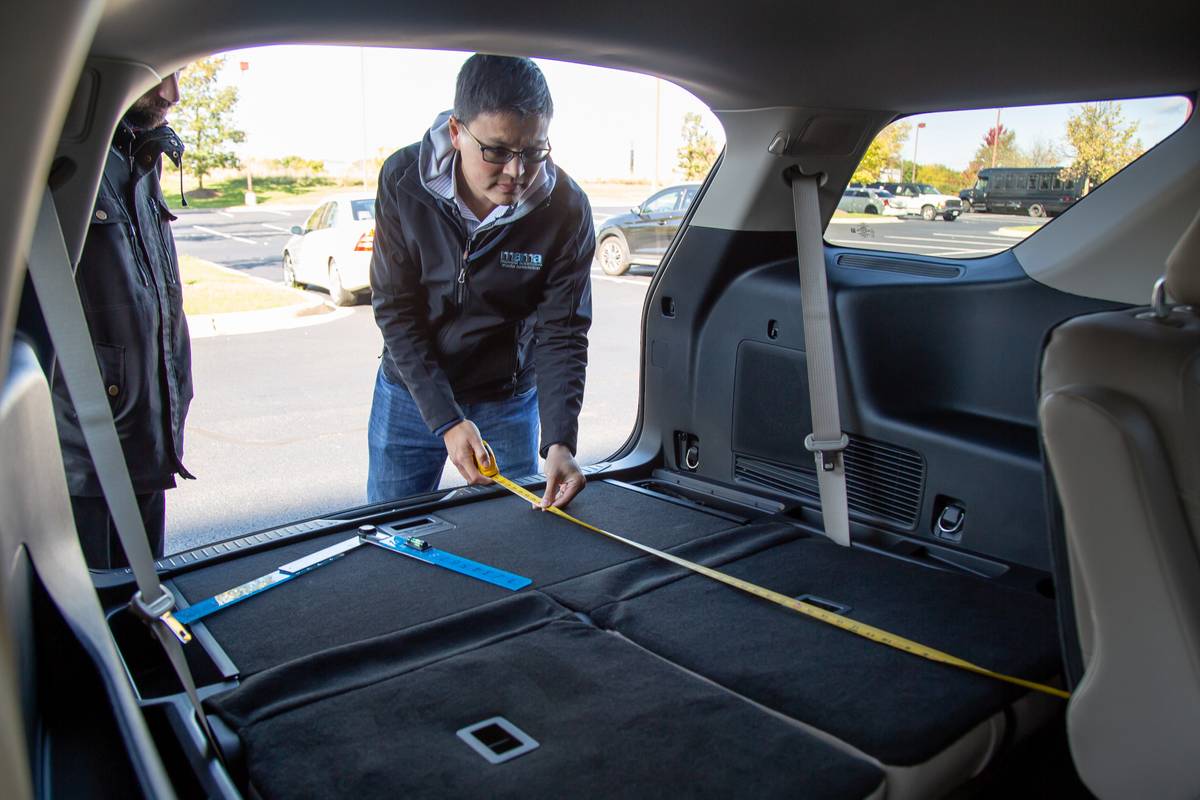
When choosing an SUV, it’s essential to consider the interior dimensions as they directly impact passenger comfort and cargo capacity. In this section, we will discuss various aspects of interior space in SUVs such as front and rear legroom, shoulder room and hip room, along with cargo space and storage capacity.
Front and Rear Legroom
Legroom is a crucial factor when assessing the comfort level offered by an SUV. Front legroom is the amount of space provided for those in the first row, while rear legroom denotes what’s available to passengers seated behind. The best-in-class SUVS, offer ample legroom for both rows ensuring that even taller occupants can travel comfortably during long journeys.
Shoulder Room and Hip Room
Besides legroom, shoulder room and hip room are also important considerations when evaluating cabin spaciousness. Shoulder room measures the distance between door panels across each row of seats which determines how much elbow space is available for passengers on either side. Similarly, hip room assesses lateral seating area provided within an SUV’s cabin.
- Adequate shoulder room: This ensures that occupants don’t feel cramped or uncomfortable during their ride.
- Sufficient hip room: A generous amount of hip room allows passengers to sit without rubbing against each other or feeling restricted in movement.
You can find detailed information about these measurements on manufacturer websites or third-party resources like Edmunds.com.
Cargo Space and Storage Capacity
People opt for SUVs due to their capacity for hauling cargo. When assessing an SUV’s interior dimensions, it’s essential to consider both its cargo space and storage capacity.
- Cargo space: This refers to the area available behind the rear seats when they are in use. It is measured in cubic feet and varies depending on whether you have a compact, midsize or full-size SUV.
- Storage capacity: This encompasses all additional storage compartments within the vehicle such as glove boxes, door pockets, under-seat trays etc., which can be useful for stowing smaller items during your trip.
To maximize cargo space in some models, you may need to fold down or remove rear seats. For example, vehicles like the 2023 Honda Pilot, offer flexible seating configurations that allow users to adapt their cabin according to specific needs.
In conclusion,
The interior dimensions of SUVs are crucial in determining the comfort and convenience for drivers and passengers alike. Next, let’s analyze the exterior measurements of these cars to comprehend their proportions, form, and agility.
Key Takeaway: When deciding on an SUV, the interior measurements of legroom, shoulder space and hip area should be taken into account to ensure a comfortable ride. Cargo space and storage capacity are also crucial factors when assessing the practicality of an SUV. The best-in-class SUVS offer ample space for both passengers and cargo, making them a great choice for long journeys or family trips.
3. Exterior Dimensions of SUVs

The external measurements of an SUV are a key element in assessing its overall design, driving dynamics, and usability on the road. In this section, we’ll examine the exterior dimensions of various SUV models to understand their performance and practicality on the road. Additionally, we’ll cover wheelbase measurements and turning radius to help you understand how these factors contribute to your driving experience.
Length, Width, and Height of SUVs
SUVs come in a variety of sizes, from the Honda CR-V’s compact crossover to the Ford Expedition’s full-size. The length typically varies between 165 inches (compact) up to 210 inches (full-size), while widths range from around 70 inches for smaller models up to approximately 80 inches for larger ones. Heights can vary significantly depending on roof rails or other accessories but generally fall within a range of about 65-75 inches.
Ground Clearance and Approach Angle
An important aspect when considering off-road capabilities is ground clearance – which refers to the distance between the lowest point of an SUV’s undercarriage and level ground beneath it. Higher ground clearances are ideal for tackling rough terrain without damaging your vehicle’s underside components; however they may also affect handling characteristics at high speeds due to increased center-of-gravity heights. Some popular off-roading options with ample ground clearance include the Jeep Wrangler, boasting around 10-inches minimum.
The approach angle is another critical factor for off-road enthusiasts. It measures the maximum incline an SUV can climb without scraping its front bumper or undercarriage components. A higher approach angle means better off-roading capabilities, with vehicles like the Toyota 4Runner offering a commendable 33-degree approach angle.
Wheelbase and Turning Radius
The wheelbase of an SUV refers to the distance between its front and rear axles. Generally speaking, longer wheelbases provide more stable rides at high speeds but may also result in less agile handling around tight corners or narrow city streets. Compact crossovers tend to have shorter wheelbases (around 105 inches), while full-size models boast longer ones (upwards of 120 inches).
Turning radius is another essential aspect when considering maneuverability in tight spaces such as parking lots or crowded urban areas. Smaller turning radii allow drivers to make tighter turns with ease, making it simpler to navigate through congested traffic conditions or park in cramped spots. The Subaru Crosstrek, for example, has a relatively small turning radius of just about 35 feet.
When selecting an SUV, the size of its exterior is a critical factor to consider. To ensure the safety and security of drivers, it is essential to understand the features available in today’s modern SUVs, such as airbags and electronic stability control (ESC).
Key Takeaway: Exterior measurements, such as length, width and height of an SUV are key to its overall look and performance. Ground clearance and approach angle are important factors for off-road capabilities while wheelbase measurements and turning radius contribute to driving experience.
4. Safety Features in SUVs

Safety is a top priority for most drivers, especially when it comes to driving an SUV. Modern SUVs come with a variety of safety features that offer protection and comfort while driving. In this section, we will explore some of the essential safety features found in today’s SUVs.
Airbags and Electronic Stability Control (ESC)
Airbags are a crucial component of any vehicle’s safety system, designed to provide protection during collisions by rapidly inflating upon impact. Most new SUV models come standard with multiple airbags strategically placed throughout the cabin for maximum coverage, including front airbags for driver and passenger as well as side-curtain airbags protecting all passengers from potential side impacts or rollovers.
Electronic Stability Control (ESC) is another vital feature found in modern SUVS that helps maintain control on slippery surfaces or during sudden maneuvers by automatically applying brakes to individual wheels and adjusting engine power output accordingly. This technology has been proven effective at reducing single-vehicle accidents involving loss of control according to NHTSA.
Blind Spot Monitoring System (BSM)
The Blind Spot Monitoring System (BSM) uses sensors mounted on the rear bumper or side mirrors to detect vehicles approaching from behind within your blind spots while changing lanes or merging onto highways. When a vehicle enters your blind spot area, BSM alerts you through visual indicators on your side mirrors or audible warnings if necessary. Some advanced systems even offer active intervention like steering input correction or gentle braking application if needed (Consumer Reports).
Adaptive Cruise Control (ACC)
ACC is a technology that employs either radar or cameras to detect the traffic ahead, allowing it to automatically adjust your vehicle’s speed and maintain an appropriate distance from the car in front of you for enhanced comfort during long drives. ACC uses radar or cameras to monitor the traffic ahead and can slow down or accelerate as needed without driver input. Some advanced systems even offer stop-and-go functionality, allowing the SUV to come to a complete stop when necessary and resume cruising once traffic starts moving again.
In summary, modern SUVs are equipped with various safety features designed to protect occupants during collisions while also providing assistance for safer driving on today’s busy roads. From airbags and ESC systems ensuring stability control during challenging conditions, blind spot monitoring helping avoid lane change accidents, adaptive cruise control maintaining safe distances from other vehicles – these technologies contribute significantly towards enhancing overall road safety.
Safety in SUVs is a significant point to ponder when deciding on an automobile. With that being said, performance specifications of SUVs such as engine power outputs and torque ratings should also be taken into account for the best driving experience possible.
Key Takeaway: Modern SUVs are equipped with cutting-edge safety features, such as airbags, ESC, BSM and ACC to protect those inside during accidents and help drivers stay safe. These technologies contribute significantly towards enhancing overall road safety by providing maximum coverage, maintaining safe distances from other vehicles, and alerting drivers of potential hazards.
5. Performance Specifications of SUVs
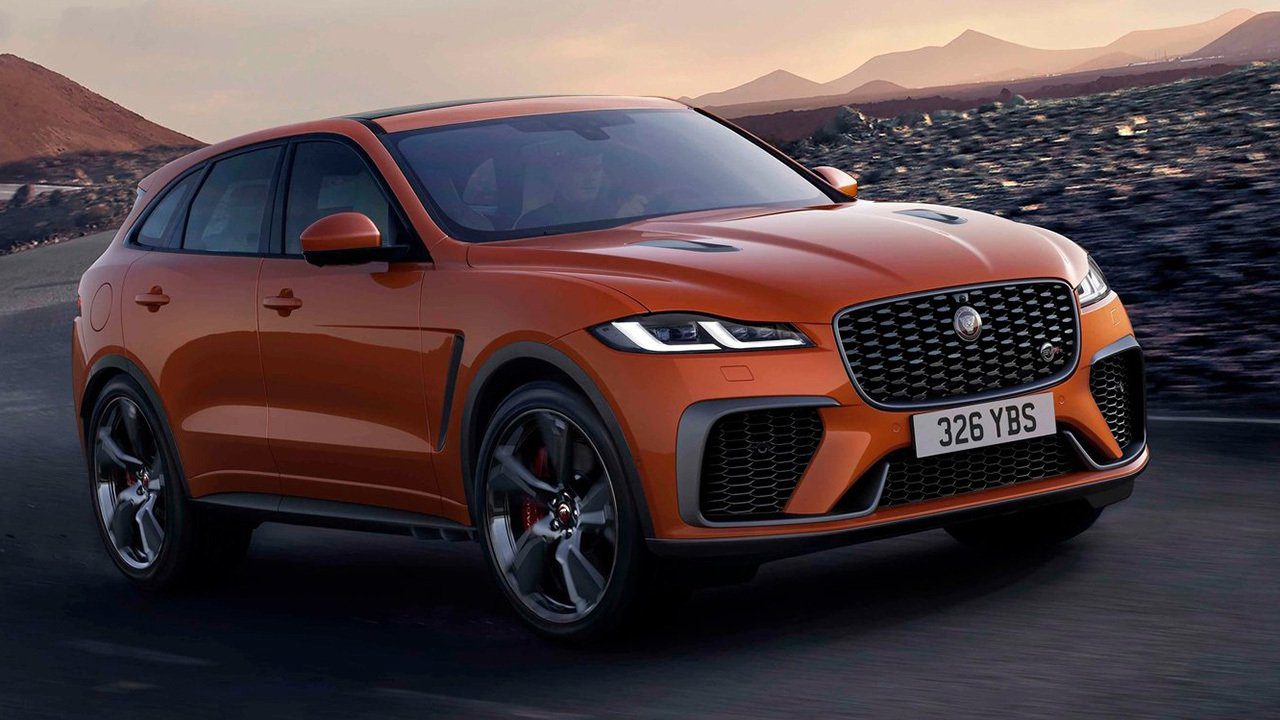
When it comes to selecting an SUV, performance parameters are essential for making the correct choice. In this section, we will look at the engine power outputs and torque ratings, fuel economy ratings, and towing capacity of different SUV models.
Engine Power Outputs and Torque Ratings
Torque is the twisting force that helps propel your vehicle, and higher numbers indicate more powerful engines with better acceleration capabilities. Higher numbers indicate more powerful engines with better acceleration capabilities. Some popular high-performance SUVs include:
- Jeep Grand Cherokee Trackhawk: 707 hp and 645 lb-ft of torque
- BMW X5 M Competition: 617 hp and 553 lb-ft of torque
- Mercedes-AMG GLC63 S Coupe:503 hp and516 lb-ft of torque
Fuel Economy Ratings
Fuel efficiency is another important factor when considering an SUV purchase. With fluctuating gas prices, having a vehicle with good fuel economy can save you money over time. The Environmental Protection Agency (EPA) provides estimated city/highway combined miles per gallon (MPG) figures for each model year.
Some top-rated fuel-efficient SUVS are:
- Toyota RAV4 Hybrid: 40 MPG combined
- Honda CR-V Hybrid: 38 MPG combined
- Ford Escape SE Sport Hybrid: 37 MPG combined
Towing Capacity
If you plan on towing a trailer, boat, or other heavy loads with your SUV, it’s essential to consider the vehicle’s towing capacity. The total weight a vehicle can pull when towing is usually expressed in pounds and depends on different elements such as the engine size, transmission setup, and suspension system.
Here are some SUV models with impressive towing capacities:
- Dodge Durango SRT Hellcat: up to 8,700 lbs of towing capacity
- Land Rover Discovery HSE Luxury Si6 Gasoline V6 Supercharged Engine Model (2023): up to 8,201 lbs of towing capacity
- aLexus GX 460: up to 6,500 lbs of towing capacity
Considering the performance specifications of an SUV will help you make a well-informed decision that suits your driving needs and preferences. Whether it’s engine power, fuel efficiency, or towing capacity that matters most to you, there is an SUV model available with the right combination of features.
SUVs offer a range of power and torque outputs, in addition to fuel efficiency and hauling capability. Let’s now consider the tech offerings available in these cars.
Key Takeaway: This section discusses the performance specifications of SUVs, including engine power outputs and torque ratings, fuel economy ratings, and towing capacity. It highlights some high-performance SUV models such as Jeep Grand Cherokee Trackhawk and BMW X5 M Competition while also mentioning top-rated fuel-efficient SUVS like Toyota RAV4 Hybrid. The section concludes that considering the performance specifications will help buyers make an informed decision based on their driving needs and preferences.
6. Technology Features in SUVs

Modern SUVs are packed with technology features to provide convenience, entertainment, and safety for drivers and passengers alike while enhancing the driving experience. In this section, we will delve into the various tech features found in modern SUVs that provide convenience, entertainment and safety.
Infotainment Systems
The infotainment system is at the heart of any vehicle’s technology suite. These systems unite audio, guidance, communication and other capacities into a single user-friendly interface. Many new SUVs come standard with large touchscreens that allow users to control various aspects of their vehicle such as climate settings or multimedia playback. Some popular infotainment systems include Apple CarPlay, Android Auto, and proprietary systems like Ford’s SYNC 3 or Chevrolet’s MyLink.
- Apple CarPlay: Allows iPhone users to connect their device to the car’s infotainment system for seamless integration of apps like Maps, Messages, Music and more.
- Android Auto: Similar to Apple CarPlay but designed for Android devices; offers access to Google Maps navigation along with numerous compatible apps from your smartphone.
- Ford SYNC 3: Offers voice-activated controls allowing you hands-free operation while keeping your eyes on the road; includes compatibility with both Apple CarPlay & Android Auto.
- Chevrolet MyLink:An intuitive touchscreen interface providing access to music streaming services such as Pandora & Spotify while also offering support for Siri Eyes Free functionality when paired with an iPhone device.
Connectivity Options
Staying connected on the go is essential for many drivers, and modern SUVs offer a variety of connectivity options to keep you in touch with the world around you. Some common features include:
- Bluetooth Connectivity: Allows hands-free calling and wireless audio streaming from compatible devices.
- USB Ports: Provide charging capabilities for your mobile devices as well as data transfer for media playback.
- Built-in Wi-Fi Hotspot: Enables passengers to connect their devices to the internet while on the road; often requires a separate data plan or subscription service.
Driver Assistance Technologies
SUVs are increasingly being equipped with advanced driver assistance systems (ADAS) that use sensors, cameras, and other technologies to help prevent accidents and improve overall safety. These features can range from basic parking aids like rearview cameras to more sophisticated systems such as adaptive cruise control or lane-keeping assist. Here are some popular ADAS features found in modern SUVs:
- Adaptive Cruise Control (ACC):Maintains a set distance between your vehicle and the one ahead by automatically adjusting speed when necessary; particularly useful during highway driving conditions.
- Lane Departure Warning (LDW):Audibly alerts drivers if they begin drifting out of their lane without signaling first; helps reduce instances of unintentional lane changes which could lead to collisions.
Technology features in SUVs have become increasingly advanced and sophisticated, allowing for an enjoyable driving experience. When considering the cost of ownership, it is essential to factor in the price associated with owning an SUV.
Key Takeaway: Modern SUVs are equipped with a range of technology features, including infotainment systems like Apple CarPlay and Android Auto, as well as connectivity options such as Bluetooth and built-in Wi-Fi hotspots. Furthermore, ADAS such as adaptive cruise control and lane departure warning can help avert accidents and enhance road safety.
7. Pricing of SUVs
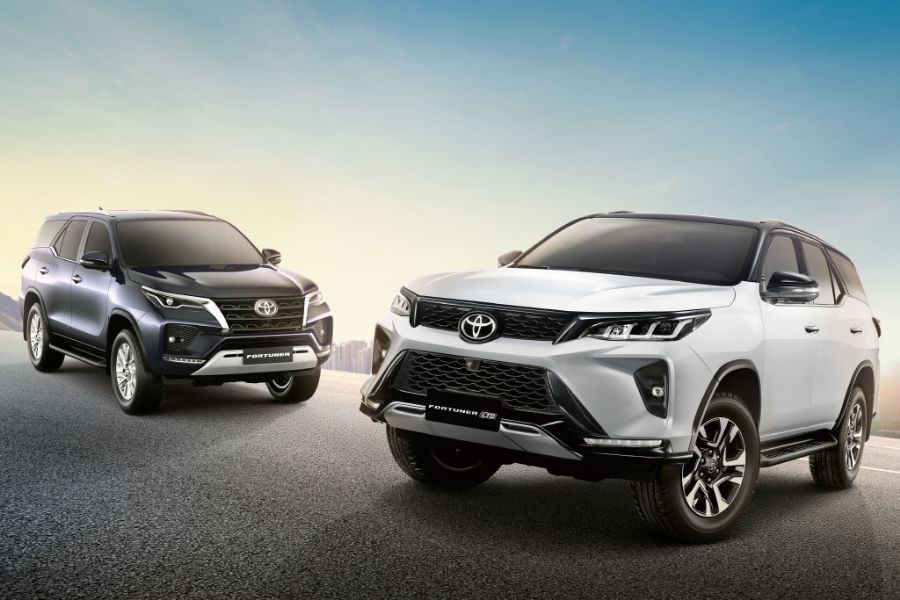
When considering the purchase of a new SUV, potential buyers typically prioritize price as one of their main criteria. In this section, we will explore the various price ranges for different models of SUVs, financing options available, and cost of maintenance.
Price Range for Different Models
The market offers a wide variety of SUVs with varying prices depending on factors such as brand reputation, size class (compact or full-size), features included in standard trims and optional packages. Here are some examples:
- Subaru Crosstrek: starting at around $22,000
- Toyota RAV4: starting at around $26,000
- Ford Explorer: starting at around $33,000
- Audi Q5: starting at around $43,000
- Mercedes-Benz GLS-Class:starting at around $76,000 li > Financing Options Available > Many car dealers offer various financing plans to help you purchase your desired SUV without emptying your wallet. Some common methods include: Leasing: This option allows you to drive a new SUV for a specified period, typically 2-3 years, with lower monthly payments compared to purchasing. At the end of the lease term, you can either return the vehicle or buy it at its residual value.
- Car Loans: Many financial institutions and dealerships offer loans with competitive interest rates and flexible repayment terms that cater to your budget needs. Incentives and Rebates: Manufacturers often provide special offers such as cash rebates or low-interest financing deals on specific models during promotional periods. Keep an eye out for these opportunities when shopping around.
Cost of Maintenance
Maintaining your SUV is essential in ensuring its longevity and performance. The cost of maintenance varies depending on factors like make/model, age/mileage, driving habits, local climate conditions etc. Some common expenses include:
- Routine oil changes every 5k -7k miles (approximately $30-$70)
- Tire rotations every six months (approximately $20-$50)
- Brake pad replacements ($100-$300 per axle) li > Additionally , some luxury brands may require more expensive parts or specialized service technicians which could increase maintenance costs . It’s important to research potential long-term expenses before committing to any particular model.
Key Takeaway: This section explores the pricing of SUVs, financing options available and cost of maintenance. The price range for different models varies depending on factors such as brand reputation, size class and features included in standard trims and optional packages. Financing options include leasing, car loans and incentives/rebates while maintaining your SUV is essential to ensure its longevity and performance with routine oil changes every 5k-7k miles, tire rotations every six months and brake pad replacements costing $100-$300 per axle.
Frequently Asked Questions Suvs Witht the Most Headroom
Which SUV has the most head room?
The Land Rover Range Rover offers the most headroom in its class, with up to 39.5 inches of front headroom and 39.4 inches of rear headroom. This makes it an excellent choice for taller drivers and passengers who require extra space for comfort.
Can a tall person fit in a Honda CRV?
Yes, a tall person can comfortably fit in a Honda CR-V as it provides ample headroom and legroom. The CR-V offers 40.1 inches of front headroom and 39.2 inches of rear headroom, making it suitable for taller individuals.
How much headroom does a tall person need in a car?
A tall person typically requires at least 38-40 inches of headroom to be comfortable inside a vehicle without feeling cramped or having their hair touch the roof lining.
Is the Kia Seltos good for tall people?
The Kia Seltos is relatively accommodating for taller individuals with its generous front row dimensions offering around 40 inches of both leg room and hip room along with decent amount of shoulder width; however, some might find rear seat area slightly less spacious compared to other models within same segment like Subaru Crosstrek or Mazda CX-30
Conclusion
For those seeking SUVs with the most headroom, a variety of options are available to choose from in terms of interior and exterior dimensions, safety features, performance specifications, technology features and pricing. When picking an SUV, one should think about its internal and external measurements to make sure it meets their requirements. Safety, performance, tech amenities and cost can differ depending on the make/model of SUV you opt for. Ultimately it is important to do research in order to make sure you get a quality SUV with ample headroom for comfort and convenience at a price point that works for your budget.

